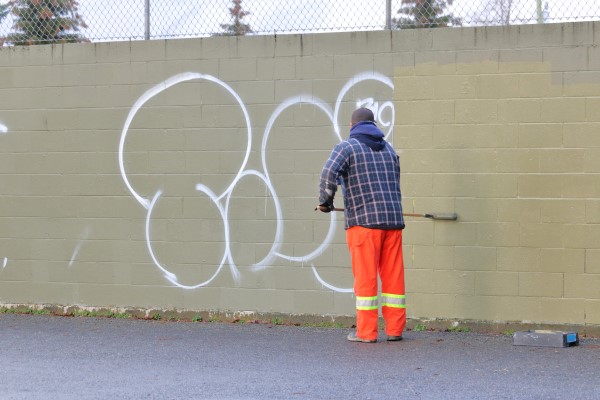Graffiti Removal Services
Graffiti removal is a meticulous process that demands careful handling.
Did you know that graffiti on masonry surfaces like brick, concrete, sandstone, and granite, doesn’t just sit on the surface; it seeps deep into the material, similar to ink seeping into chalk. Mishandling this process can result in significant damage, including salt deposits, rising damp, premature brick deterioration, and, in severe cases, structural instability.
Resorting to abrasive techniques should be an absolute last resort. Instead, effective graffiti removal hinges on selecting the appropriate cleaning solution tailored to the surface type and the specific graffiti paint used. By doing so, you can avoid costly and disruptive measures like brick replacement, ensuring the preservation of your property integrity.

10 Reasons Why Graffiti Removal is Important
Graffiti removal is essential for various reasons, as it contributes to the well-being of communities and the preservation of public and private spaces. Here are ten key reasons why graffiti removal is important:
-
Preservation of Aesthetics: Graffiti, often unauthorized, can deface buildings, monuments, and public spaces, negatively impacting the visual appeal of communities.
-
Property Value: Graffiti can decrease property values in affected areas, making it crucial for homeowners and businesses to remove it promptly to maintain or enhance their property’s worth.
-
Economic Impact: Graffiti can deter potential investors, tourists, and customers, leading to economic losses for businesses and communities.
-
Safety: Graffiti can communicate territorial markings and may be associated with criminal activity. Prompt removal helps improve perceptions of safety.
-
Quality of Life: Graffiti-free neighborhoods contribute to a higher quality of life for residents, fostering a sense of pride in their community.
-
Prevent Escalation: If graffiti is left unchecked, it may encourage more vandalism, leading to a snowball effect of further defacement.
-
Community Unity: Graffiti removal initiatives can foster community unity, encouraging residents and businesses to work together to combat vandalism.
-
Public Health: Graffiti often attracts litter and illegal dumping, which can negatively impact public health and sanitation.
-
Historical and Cultural Preservation: Graffiti can damage historically significant sites and culturally relevant areas, erasing important heritage.
-
Legal and Regulatory Compliance: In many places, graffiti is illegal, and property owners may be subject to fines and penalties if they don’t remove it promptly.
